
A friend, whose ears and judgement I trust, pointed me to Java HiFi and their GaN FET-based amplifiers. I’d heard the buzz about GaN FETs, more than a murmur, as being able to offer Class D amplification without the sizzle.
Of course I’m kinda joking because suggesting that all Class D amps have the exact same sonic character is like suggesting everyone from New Jersey says “Joisey” and uses curse words in most sentences (OK, maybe there is some truth to both depending on where in Joisey you’re from). That being said, I think it is safe to say that digital amps, and boys from Bloomfield in the 1970s, are not typically known for their rich, warm, character. No, how you doin’?

The Java Hi-Fi Single Shot Integrated Amplifier that’s under review is a full-featured integrated with an inbuilt USB DAC, using dual Burr-Brown PCM1794As in monaural mode, that supports PCM rates up to 24-bit/192kHz and DSD128, a MM Phono Stage (see specs below), and 2 pair of line level RCA inputs. An LDR (Light Dependent Resistor) preamp stage is married to the 200 Watt (into 8 Ohms, doubling down into 4) GaN FET-based (Gallium Nitrade) Class D power out. You can also connect to the Single Shot via aptX Bluetooth, the friend and family connection, and there’s a Pre-Out for adding a powered subwoofer.
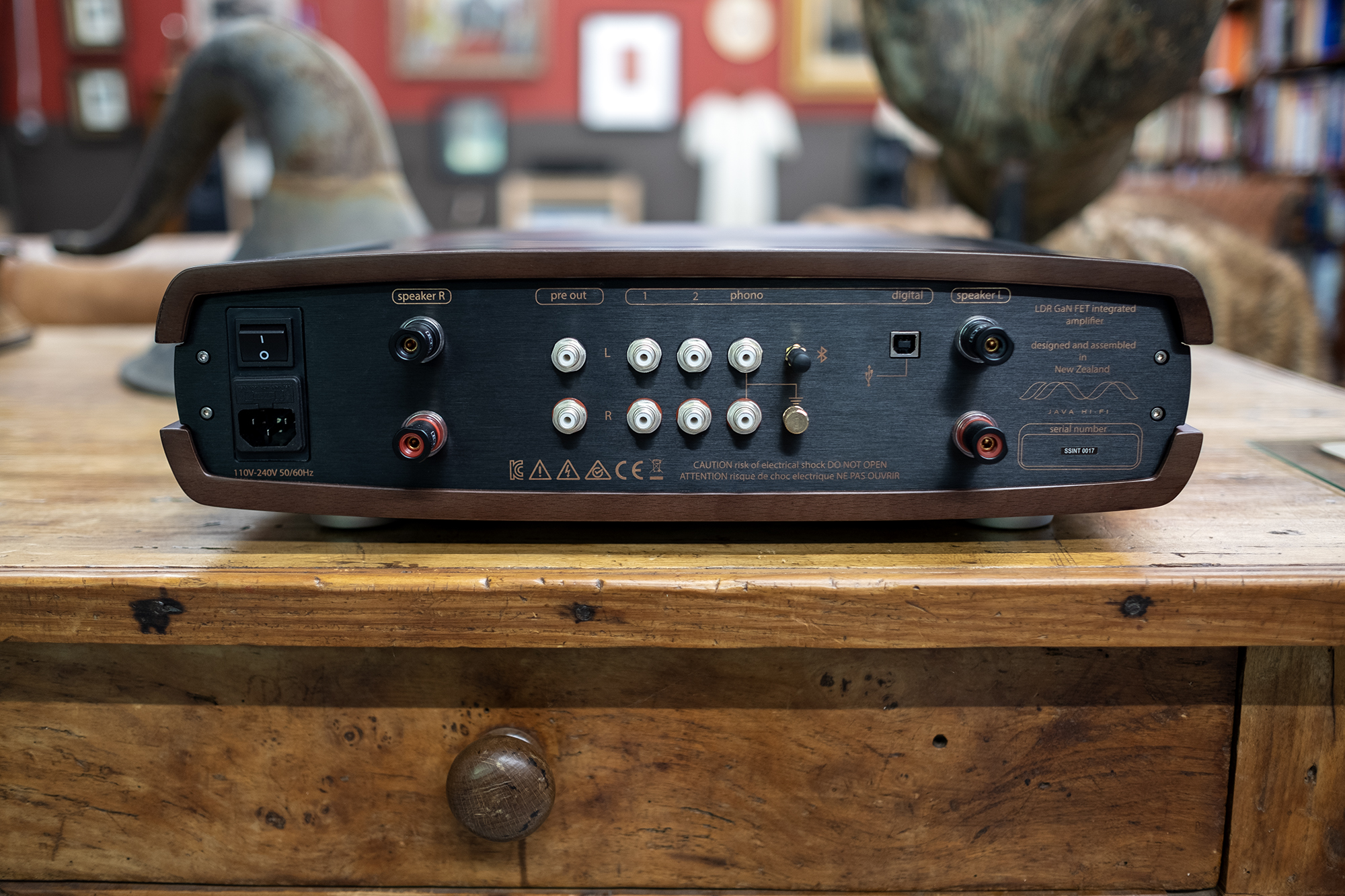
I appreciate a clearly labelled and cleanly arranged back panel.
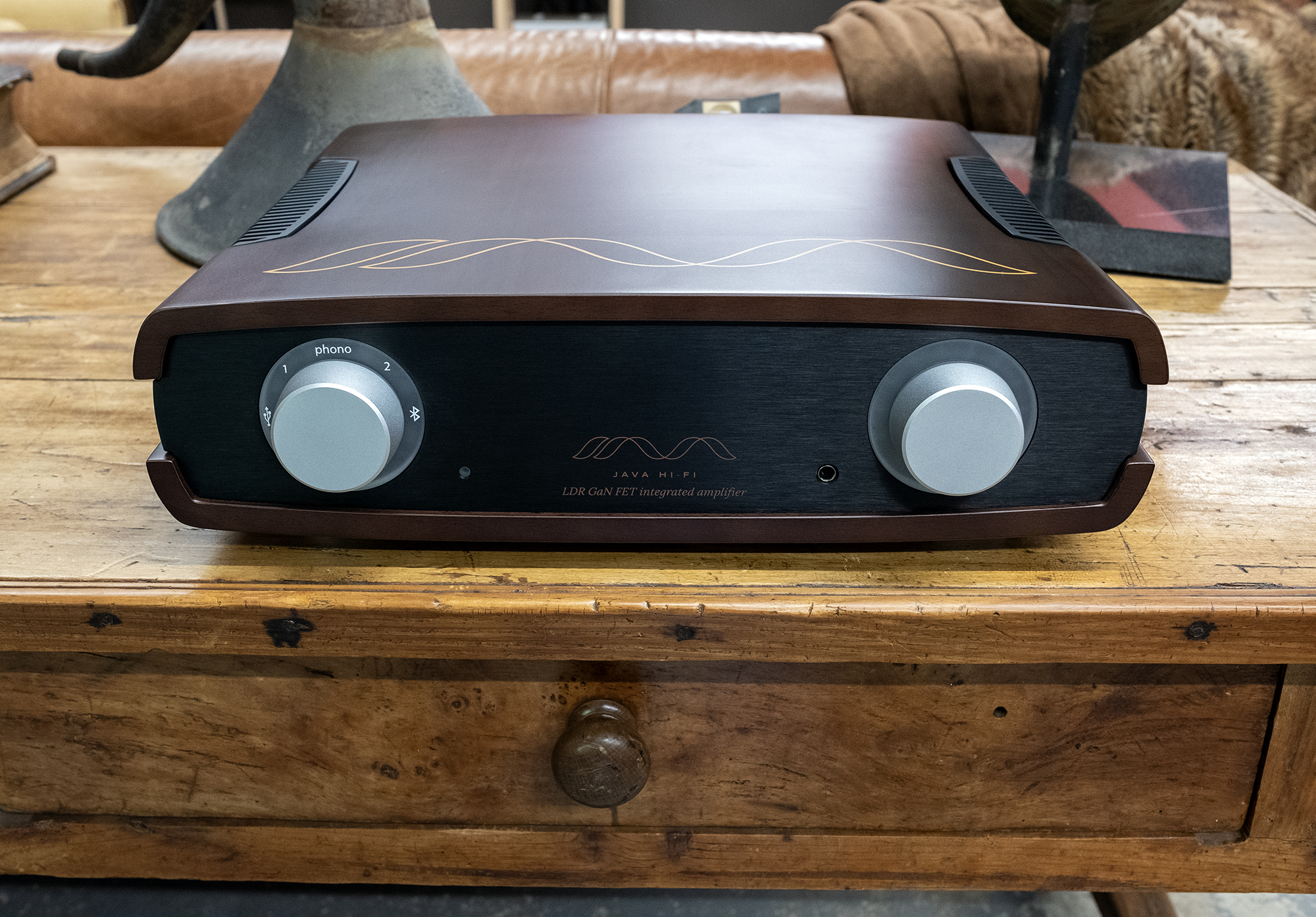
Two large knobs, one for input, one for volume, sit on either side of the front panel along with a 1/4” headphone jack and a small LED status indicator (on Off, red Standby). The included slim, small aluminum remote offers power, volume, input, mute, and the ability to turn off the backlit white LED lights that indicate the active input and volume level. I left ‘em on. Finally, a button marked “CAL” remains a mystery after several tries (note: “CAL” is for future functionality as per Java).

It’s also more than worth noting that the Java integrated comes in a wide variety of finish options, with 7 case cover choices and 3 front panel colors with matching heat sinks on either side. Nice! But don’t let all those handsome looks fool ya’—there’s a serious music maker hiding inside.
I ran the Java Single Shot with three pair of speakers—the recently reviewed YG Acoustics Summit (review), the review Rockport Atria II (more info), and the Barn resident DeVore O/96 (review). While I mostly used the Java’s own DAC, fed by the Auralic ARIES G1.1 (review), I also enlisted the Barn resident totaldac d1-unity (review) paired with the review Grimm MU1 (more info) to up the sonic game for the Rockport system. All cabling is from AudioQuest and you can get all of the nitty gritty system and Barn info here.
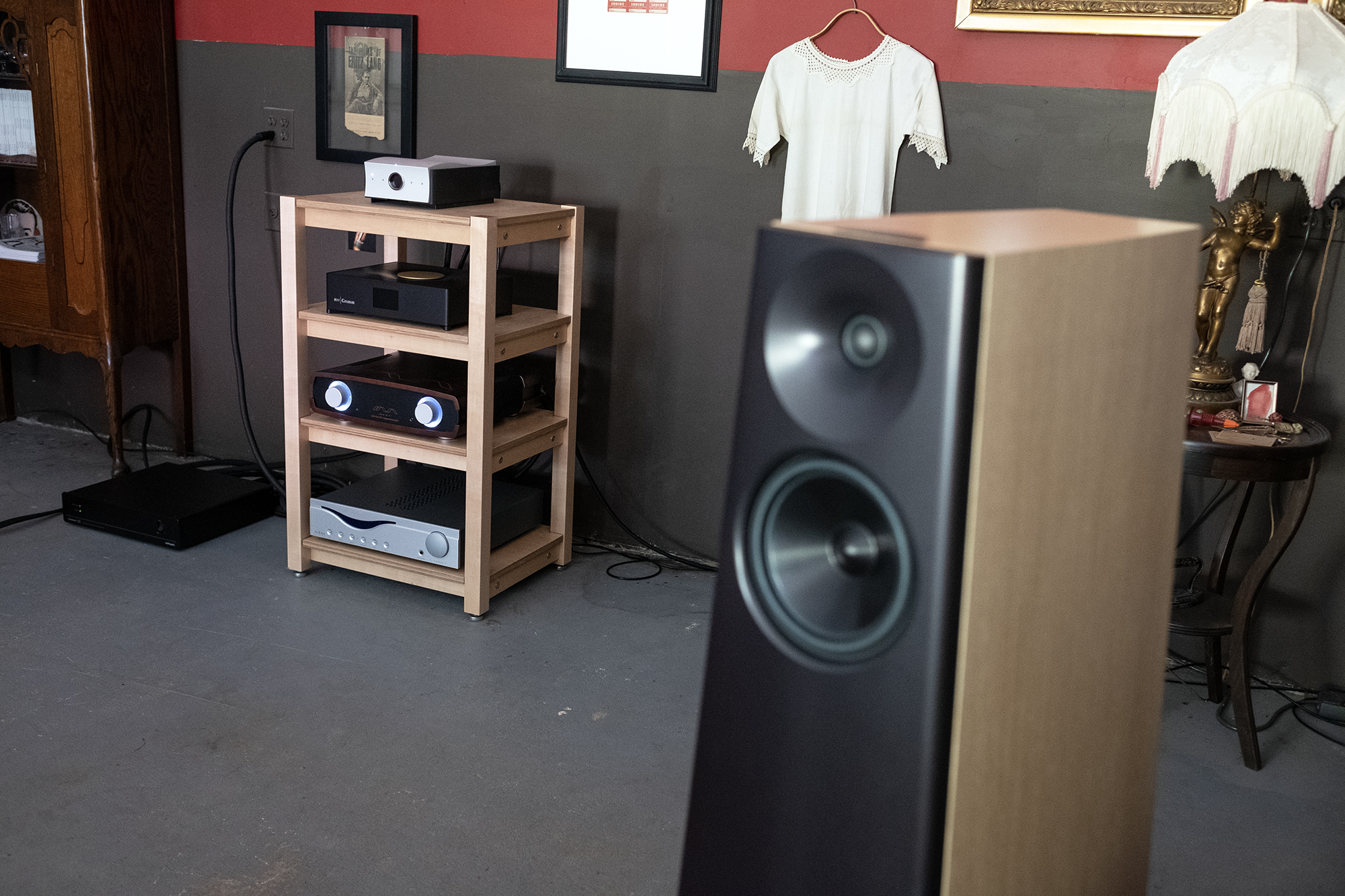
The YG Summit positively loved the Java integrated. Loved, not liked, as the Single Shot as pre/power/DAC seemed to light up the Summit from within, offering effortless, clean, clear, and rich power that made music sound alive and kickin’. The Java Single Shot seemed to offer effortless and complete control of the Summit’s three drivers per side as if there were working as one. This synergy also meant that the Summit/Java combination delivered speed of light transients, explosive dynamics, and rich, full, as fast bass response. There was also no sense of a lack of tone color, rather music, any music, came into the Barn’s B-Side feeling fully formed. While the Ayre 8-Series separates endowed the music coming through the Summit’s with a greater sense of dimensional fullness, more real flesh on the bones, this did not register as a loss when listening to the Java Single Shot over the longer haul. Or to put it another way, comparative listening and differences noted don’t always hang around like ghosts, especially when the Java/YG pairing did so many other things exceptionally well.
This beautiful synergy was more than evident on Laurel Halo’s recent album Atlas (review), a wonder of a record that’s as rich and rewarding as a favorite feature-length film. This is lustrous ambient ethereal music that kinda floats into the room and the Java/YG combo projected it as such, filling the Barn with sounds and space that defied the Barn’s actual dimensions and the music’s sonic origins coming out of the YG Summit. While there was a very convincing sense of resolution, digging into the fine grained details, the Java amp/DAC never sounded, or felt, overly processed or over-hyped. Rather in this context, the Single Shot proved to be one smooth operator. Nice.
The Bill Dixon Orchestra’s Intents & Purposes from 1967 shares Dixon’s unique vision in sound created by a masterful group of 10 musicians including Byard Lancaster on alto sax and bass clarinet, Catherine Norris on cello, Jimmy Garrison and Reggie Workman on bass (how’s that for a dynamic duo!), Robert “Cleve” Pozar on drums, and of course Dixon on trumpet.
From the original liner notes:
The music will speak for itself. Almost all that is required is a willingness to listen to what is taking place. In effect, it is only necessary to bring oneself to the music as the composer brought the music into being.
Sounds simple, right? While this isn’t anywhere near easy listening, Intents & Purposes is worth the climb and the Java/YG system presented a startlingly alive, lit up, and fully energized version in Barn. This music hinges on time, timing, and the unique voice of each player, and the Single Shot driving the Summit dug deep into every last bit if it all. Stunning.

The DeVore O/96 also took up residence on the B-Side with the Java integrated getting a full workout with the Single Shot as amp, DAC, and Phono stage with the endlessly lovely Michell Gyro SE/Michell T8 tonearm, and Ortofon 2M Black cartridge in play.

ANOHNI and the Johnsons latest My Back Was A Bridge For You To Cross is so LP-worthy I’m temped to buy 2. My Back is their first album in 7 years and it was more than worth the wait as ANOHNI’s voice seems to have somehow become even more heart-wrenchingly emotive, even more beautiful, while dealing with less than beautiful things. The Java’s phono stage is, to my way of thinking, something you want to use and forget about, as it does the job of turning tiny trembling signals into sweet sweet music in a very convincing and musically moving manner. No, I’m not raving about its performance in ultimate terms, of course you can do better if you spend more money on a stand alone phono stage, but sometimes the search for ultimate performance is just an excuse to be a lazy listener, someone incapable of enjoying the richness of the moment, plagued by what if. Ick.
Stepping back into streaming with the ARIES G1.1 feeding the Java’s USB input with a length of AudioQuest Diamond USB cable, I switched to happier moods with Nick Cave & The Bad Seeds Skeleton Tree from 2016 (joke). I’ve had the real pleasure of seeing Nick Cave perform more than a handful of times with the Bad Seeds from the Blixa days and the current Warren Ellis incarnation as well as the short lived much loved Grinderman and when they’re on, and in my experience they mostly are, its a transformative experience.
With the Single Shot in control of bits and power, the Java’s clarity, control, and speed, made Skeleton Tree come to life in Barn with a real sense of menace, power, and sorrow. My preferred integrated amp for the DeVores, the Leben CS600, coaxes more emotion from the O/96 to my ears and heart because it places more emphasis on tone color and body while offering great grip and control. In comparison, the Java Single Shot sounds a bit less ripe, a bit less rich, but we’re not talking about a gulf of difference. That said, the O/96 can happily run on 25 or so Watts so I would not think that a 200 Watt Class D amp would not be on the want list of many DeVore owners, even though the Singe Shot drove them with authority and without any sense of overt thinness or haze. Quite the opposite on that last count, as the Java integrated is exceptionally transparent and drop dead silent.
If I completely disregard price for comparison purposes, do not try this at home, the Riviera Labs Levante (review) integrated, as well as the Riviera separates (review), offered the most crazily dimensional presentation I’ve heard from the the O/96 and if I bring this aspect of performance to the fore, the Java sounds much flatter by comparison. I’m talking about the sense of dimensionality from the things responsible for making music—a sax player, a piano, a singer—not a soundstage deal. Here, if we zero in on the sound image overall, the Java Single Shot throws out a very well defined sound image as big as the recording demands.

The Java Single Shot’s last Barn stop was a spin with the Rockport Atria II, another pairing that seems unlikely in the real world but instructive nonetheless in terms of hearing how well the Single Shot’s voice travels.
The Newest Sound Around features duets from Jeanne Lee and Ran Blake from 1962 and offers a a master class in tone, timing, inflection and texture chiseled out of songbook classics and a few Blake originals. The Java Single Shot’s main strengths including control, clarity, and effortless power were standouts with the Atria II but the built-in DAC showed its shortcomings in this rather lofty system context, sounding a bit thin. I added the totaldac d1-unity and the review Grimm MU1 as Roon Server and Streamer feeding the totaldac via AES, about $25k worth of digital gear, and sure enough got more body, texture, tone, and air in and around the notes. Shocker, I know. The interesting point being, the Java as integrated amp did a very good job driving the Atria II, again more as a proof of concept than suggested system pairing.
For the Atria II, the Ayre KX-8 Preamplifier/VX-8 Power Amplifier combination offered a greater sense of texture, tone, and dimension that translated into a more compelling portrait of Jeanne Lee’s stunning vocals and Blake’s restless piano portrayed in Barn.
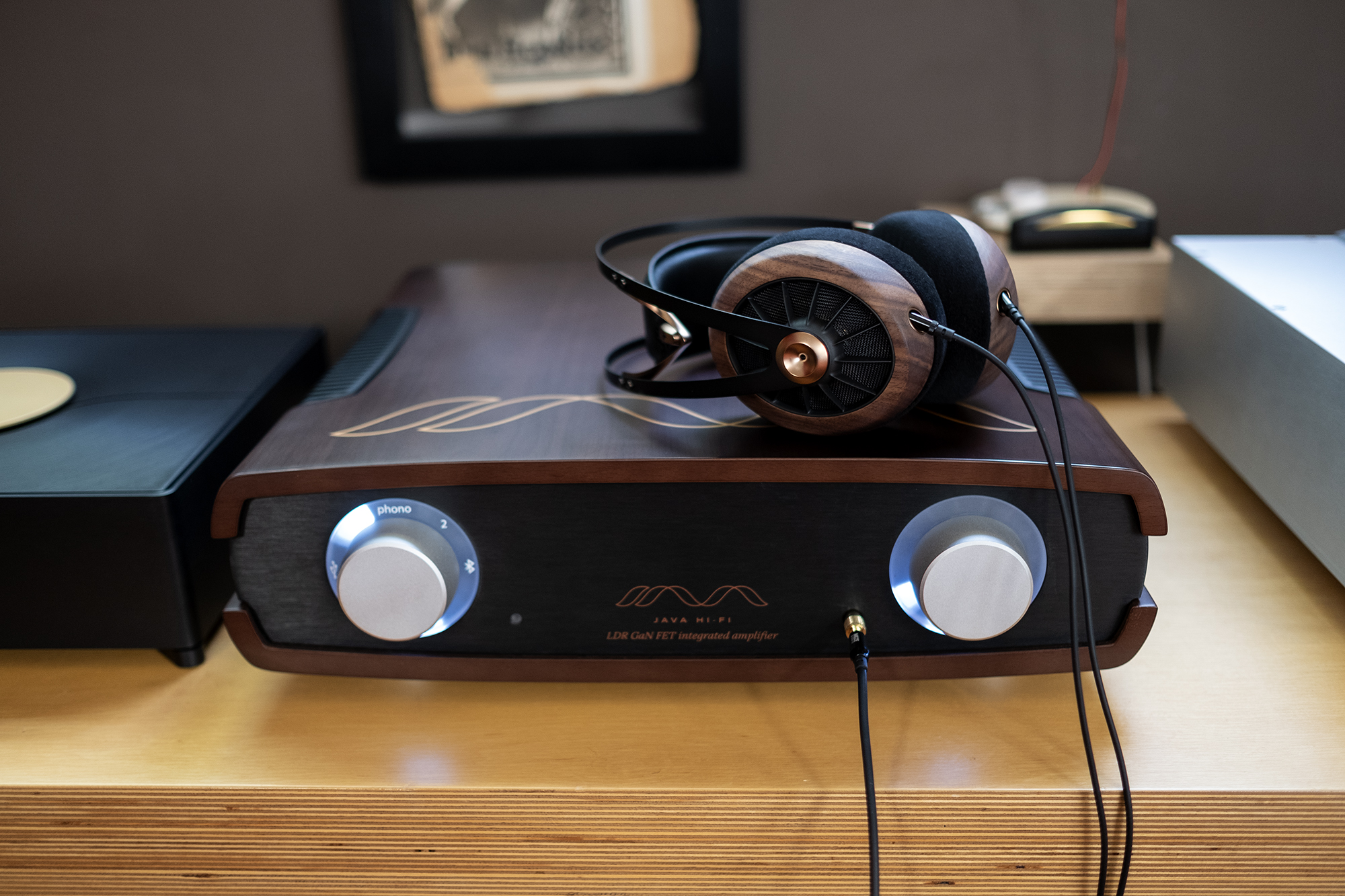
I chose to give the very recently arrived Meze Audio Pro 109 headphones some Java time, and while we’re still getting to know each other, the 109 Pro’s rich and wonderfully resolving delicacy was on full display with the Single Shot doing the driving.
Lucrecia Dalt’s ¡Ay! from last year remains a favorite record for its wild, exotic ride and rich, unexpected sound world all tied to some infectious tropical beats. Here, all up close and personal, the Single Shot’s dead quiet operation stood out even more through the 109 Pro, making Dalt’s cornucopia of delights spring from the deepest, darkest jungle silence in full color. I have to say, that this is another winning combination, Java/Meze, that feels like it adds up to more than the sum of the parts, as is the case with the Java/YG pairing. When near perfect synergy happens, and I say near perfect to leave myself some wiggle room for the future, it’s as if the gear disappears in a flash, poof!, leaving only music in its wake. I love it when that happens. Twice.
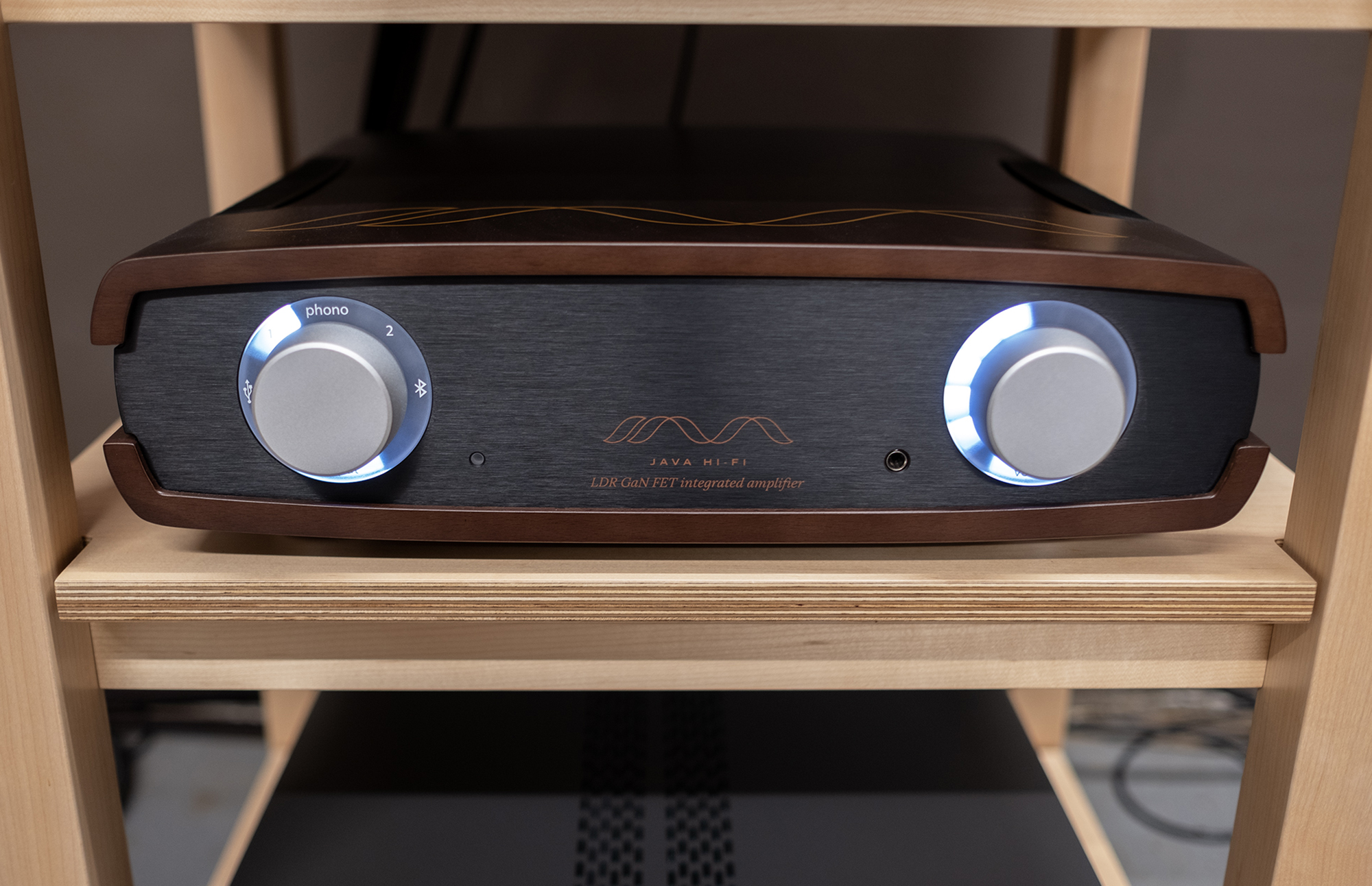
My hifi underground, those welcome voices that whisper sweet recommendations in my ear, have hit the nail on the head, again. The Java Hi-Fi Single Shot surprised, impressed, and surpassed thoughts of power Class and topologies to present music from digital and analog sources, via speakers and headphones, in a seemingly untouched form with superb detail, delicacy, and drive all wrapped up in an appealing and highly customizable package.
Java Hi-Fi Single Shot Integrated Amplifier
Price: from $8995 depending on finish
Company Website: Java Hi-Fi
US Importer Website: Robyatt Audio
Technical Details
200 watts/8 ohms (400 watts/4 ohms)
LDR pre-amp stage and GaN FET power amp stage
2 x pairs of RCA line-level inputs
1 x pair of RCA outputs (pre-out)
High-resolution DAC (USB input)
MM phono stage (RCA inputs)
Bluetooth aptX
1 x headphone output
Remote control for volume and source selection
Dimensions: 44 cm x 41.5 cm x 13 cm (w/d/h)
Weight: 10.6 kgs (23.4 lbs)

